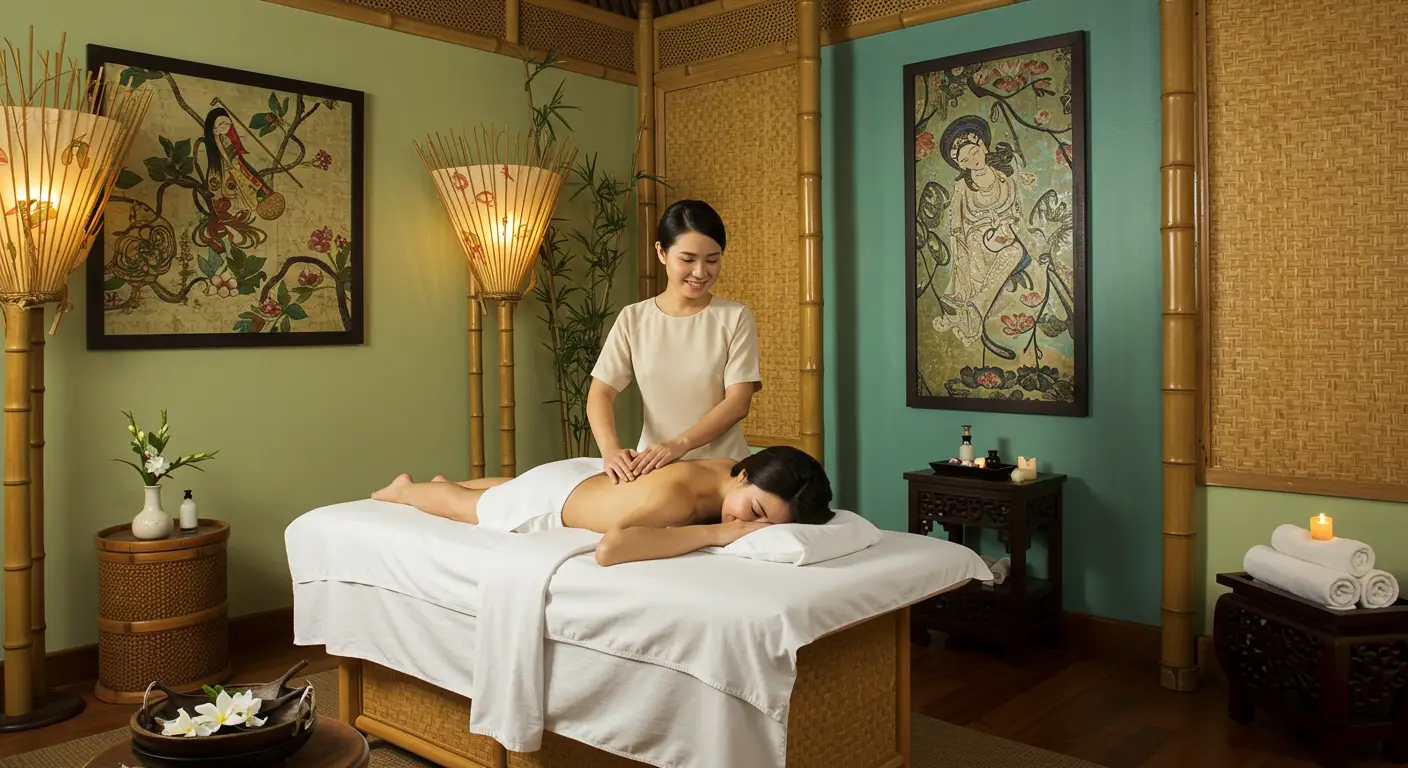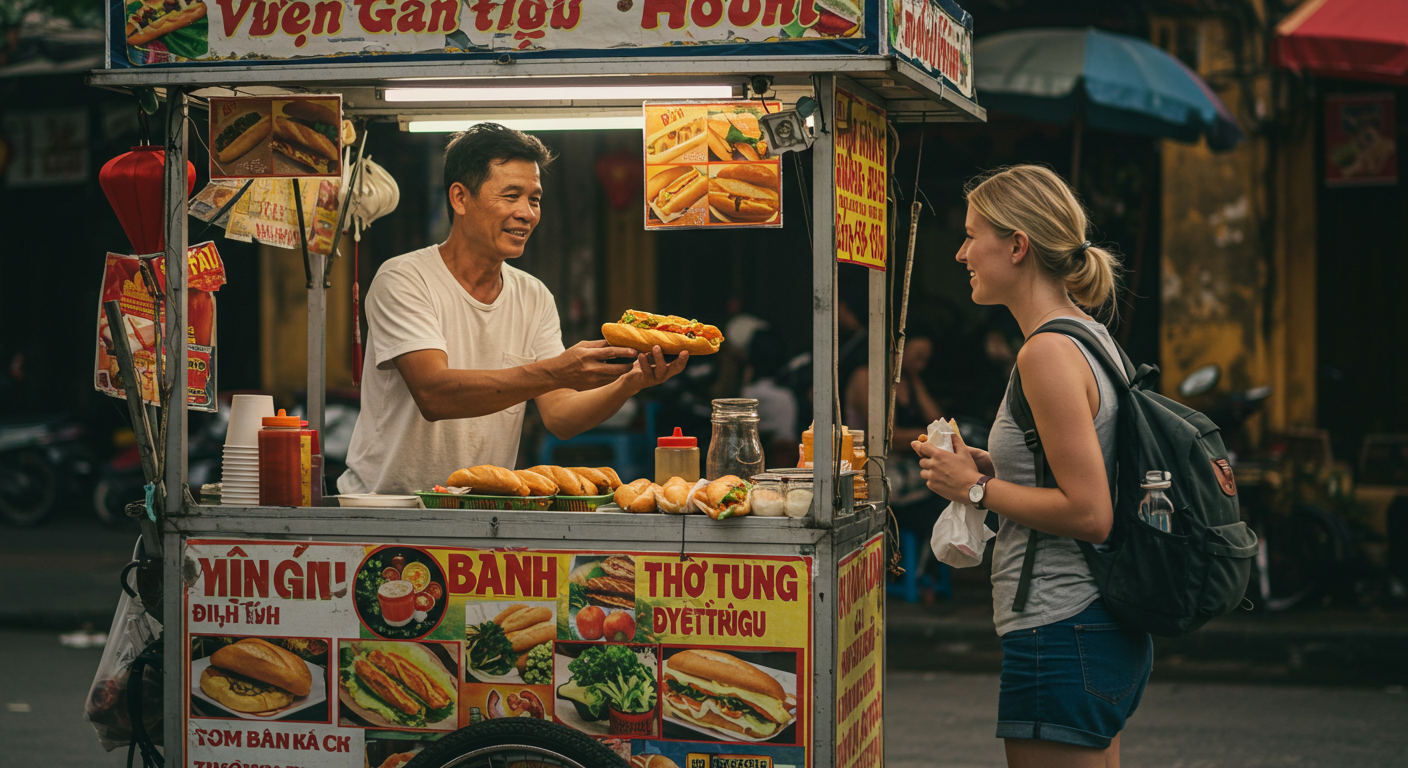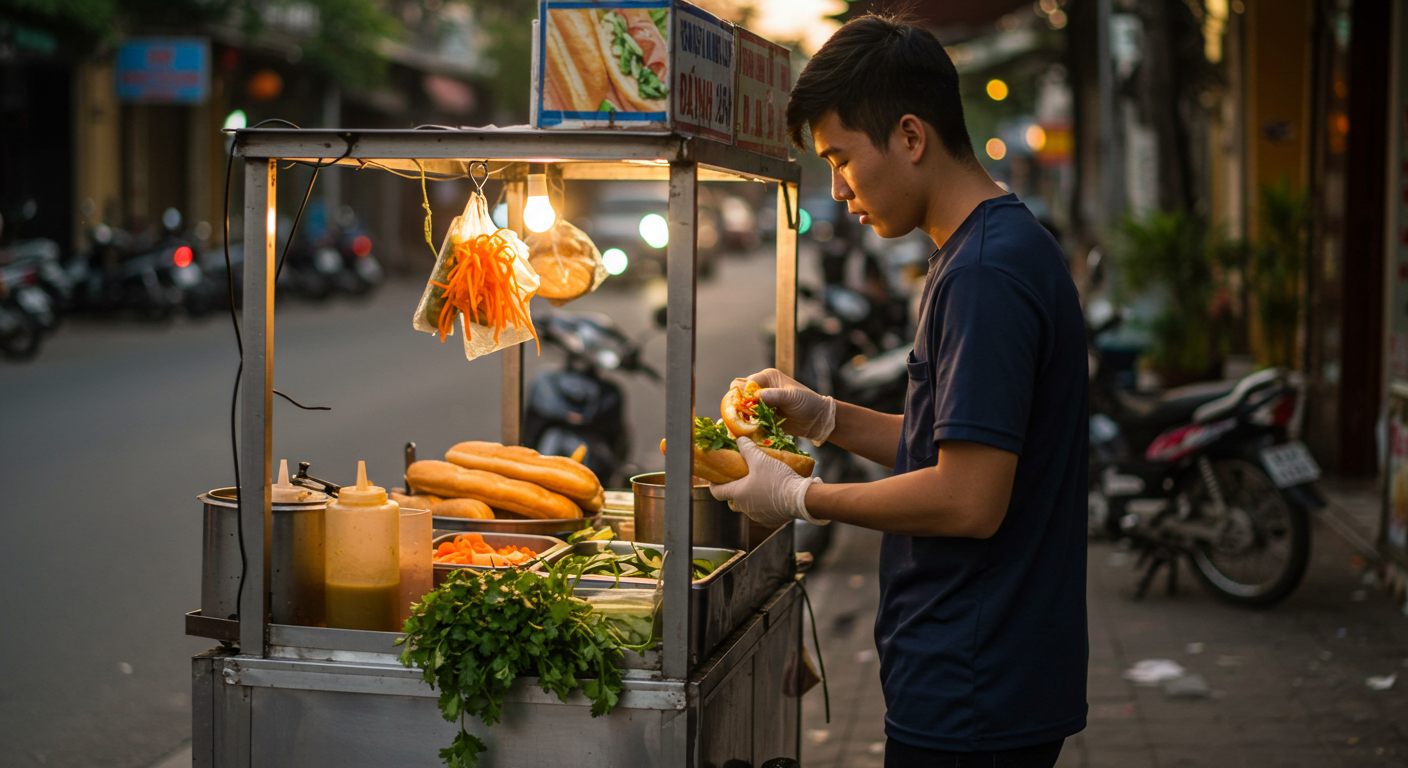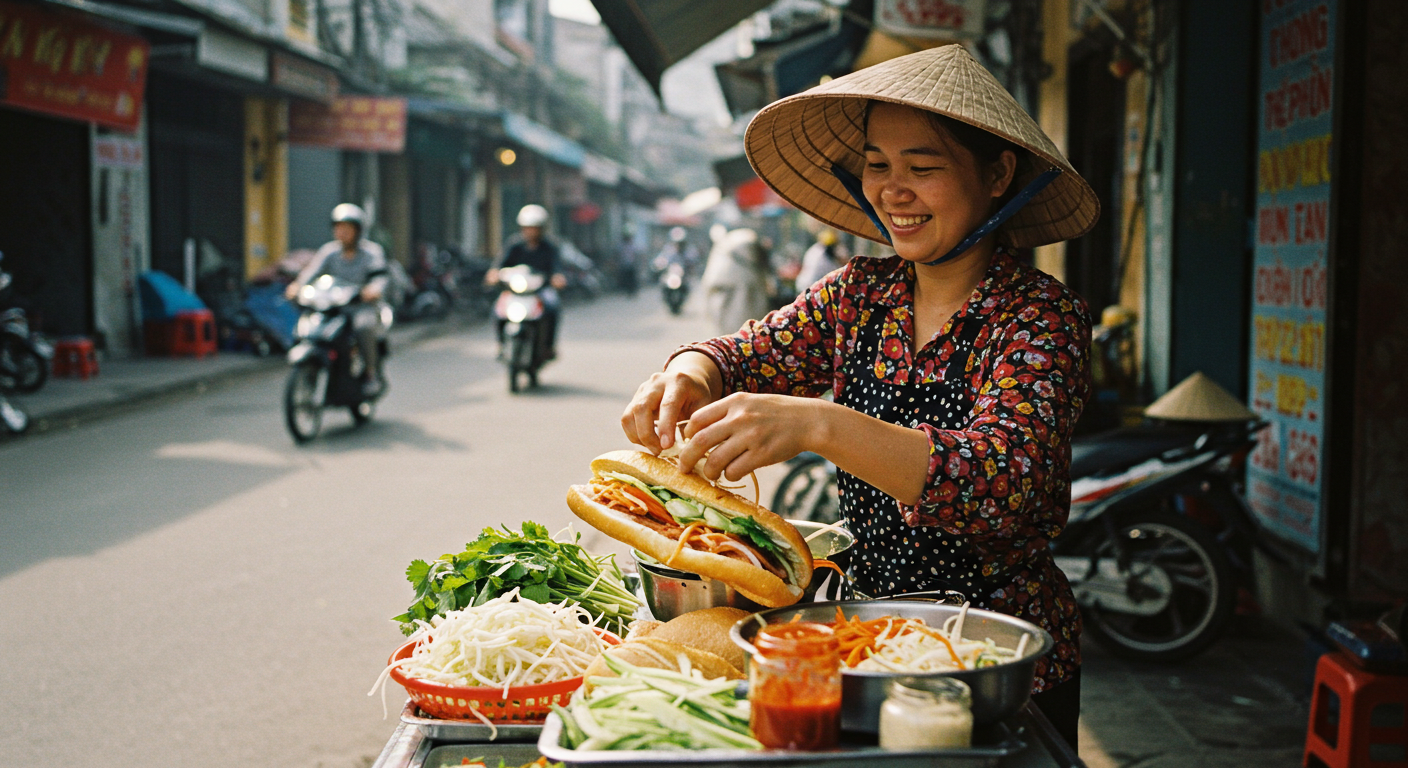
The Ancient Art of Vietnamese Massage: A Complete Guide
Discover the healing traditions of Vietnamese massage, a sophisticated therapeutic practice that combines centuries-old techniques with indigenous medicinal plants for holistic wellness.
Table of Contents
- Introduction
- Understanding Vietnamese Massage Fundamentals
- Historical Development and Cultural Significance
- Core Techniques and Methodologies
- The Power of Medicinal Herbs
- Regional Variations and Specializations
- Contemporary Applications and Benefits
- Learning and Experiencing Vietnamese Massage
- Conclusion: A Living Tradition
Introduction
Vietnamese massage represents one of Southeast Asia's most sophisticated healing traditions, combining centuries-old techniques with the therapeutic power of indigenous medicinal plants. This unique form of bodywork offers more than simple relaxation; it provides a comprehensive approach to wellness that addresses both physical ailments and mental well-being through time-tested methods passed down through generations.
Unlike other massage styles that focus primarily on muscle manipulation, Vietnamese massage integrates natural healing elements, strategic use of locally-sourced herbs, essential oils derived from native plants, and precise pressure point therapy designed to restore the body's natural energy balance. This holistic approach treats the person as a complete system rather than focusing solely on individual symptoms.
Understanding Vietnamese Massage Fundamentals
Vietnamese massage stands apart from other Asian massage styles through its distinctive integration of natural healing elements. The practice emphasizes the strategic use of locally-sourced herbs, essential oils derived from native plants, and precise pressure point therapy designed to restore the body's natural energy balance. This therapeutic approach draws from both ancient Eastern medicine principles and indigenous Vietnamese healing wisdom, creating a unique methodology that has evolved over more than a millennium.
The foundation of Vietnamese massage rests on the concept of energy flow throughout the body. Practitioners believe that physical and emotional ailments result from blockages or imbalances in this energy system. By applying specific techniques to targeted areas, therapists work to restore proper circulation, release tension, and promote the body's natural healing processes.
The practice incorporates several key principles that distinguish it from other massage traditions. First, the emphasis on herbal integration means that every session involves carefully selected medicinal plants chosen for their specific therapeutic properties. Second, the technique combines both gentle and firm pressure applications, adapting to individual needs and conditions. Third, the holistic approach addresses not just physical symptoms but also emotional and spiritual well-being.
Historical Development and Cultural Significance
The origins of Vietnamese massage trace back over 1,000 years, with the practice initially developing under the influence of Traditional Chinese Medicine during periods of Chinese rule in Vietnam. However, Vietnamese healers adapted these imported techniques to incorporate their own understanding of local medicinal plants and traditional healing practices, creating a distinctly Vietnamese approach to therapeutic bodywork.
During the Chinese Tang Dynasty's influence (7th-10th centuries), Vietnamese healers learned acupuncture and pressure point therapy. But rather than simply adopting these practices wholesale, they began experimenting with local herbs and developing techniques that worked better with Vietnam's tropical climate and the physical characteristics of the Vietnamese people.
During the French colonial period (1887-1954), Vietnamese massage underwent another transformation as practitioners began incorporating certain Western therapeutic concepts while carefully preserving the core Eastern philosophy that formed the practice's foundation. This cultural fusion resulted in the modern Vietnamese massage style that combines ancient wisdom with contemporary understanding of anatomy and physiology.
The practice was traditionally maintained within rural communities, where knowledge passed from master healers to apprentices through direct instruction and hands-on experience. This oral tradition ensured that techniques remained authentic while allowing for gradual refinement and adaptation to meet changing community needs. Master healers, known as "thầy thuốc" (medicine masters), were highly respected community members who often served as both massage therapists and herbalists.
Core Techniques and Methodologies
Vietnamese massage employs several distinctive techniques that set it apart from other massage styles. Each technique serves a specific purpose and contributes to the overall therapeutic effect of the treatment.
Acupressure (Bấm Huyệt)
Acupressure, known locally as "Bấm huyệt," involves applying sustained pressure to specific meridian points throughout the body to release energy blockages and restore natural flow. This technique requires extensive knowledge of the body's energy pathways and precise finger placement to achieve maximum therapeutic benefit.
Vietnamese acupressure differs from Chinese versions in its integration with herbal treatments and its adaptation to Vietnamese body types and common health concerns. Practitioners typically spend years learning the location and function of hundreds of pressure points, understanding how they interconnect and influence different body systems.
Deep Tissue Manipulation
Deep tissue manipulation forms another cornerstone of Vietnamese massage, with therapists using firm, sustained pressure to address muscle knots and areas of chronic tension. This technique goes beyond surface-level relaxation to target deeper muscle layers and connective tissue, providing relief for long-standing physical issues and improving overall mobility.
The Vietnamese approach to deep tissue work emphasizes gradual pressure application, allowing muscles to relax naturally rather than forcing release. This patient approach reduces discomfort while achieving more lasting results.
Herbal Compress Therapy
Herbal compress therapy represents one of the most distinctive aspects of Vietnamese massage. Practitioners prepare heated bundles containing specific combinations of medicinal herbs, which are then applied to the body to warm muscles and deliver therapeutic properties directly through the skin. The heat opens pores and enhances absorption, while the herbs provide targeted healing benefits based on their individual properties.
These compresses, called "túi thuốc nóng," are prepared fresh for each session using herbs selected based on the client's specific needs and health conditions. The preparation process itself is considered part of the therapeutic ritual.
Joint Mobilization
Joint mobilization techniques involve gentle stretching and movement designed to improve flexibility and enhance circulation throughout the body. These movements help maintain proper joint function while reducing stiffness and promoting better range of motion.
Vietnamese joint mobilization incorporates elements of traditional Vietnamese martial arts movements, creating flowing, dance-like sequences that feel natural and comfortable for the recipient.
The Power of Medicinal Herbs
The extensive use of medicinal herbs distinguishes Vietnamese massage from many other therapeutic practices. Each herb serves specific purposes and provides targeted benefits that complement the physical massage techniques.
Lemongrass (Sả)
Lemongrass offers powerful anti-inflammatory properties while promoting stress relief and mental relaxation. The herb's natural compounds help reduce swelling and provide a calming aromatic experience during treatment. In Vietnamese massage, lemongrass is often used in essential oil form or incorporated into herbal compresses for its warming and soothing effects.
Ginger (Gừng)
Ginger provides warming effects that improve circulation and help muscles relax more effectively during massage. This warming quality makes ginger particularly valuable for treating circulation issues and muscle stiffness. Vietnamese practitioners often combine ginger with other herbs to create synergistic effects that enhance overall treatment benefits.
Turmeric (Nghệ)
Turmeric contributes natural anti-inflammatory benefits while supporting skin healing, making it valuable for both therapeutic and cosmetic applications. The herb's active compound, curcumin, provides powerful antioxidant effects that support overall health and wellness.
Eucalyptus (Bạch Đàn)
Eucalyptus offers respiratory benefits while promoting muscle relaxation through its natural cooling and soothing properties. The herb's menthol-like compounds provide a refreshing sensation that complements the warming effects of other herbs used in Vietnamese massage.
Pandan Leaves (Lá Dứa)
Pandan leaves provide aromatherapy benefits that enhance stress reduction and create a more immersive therapeutic experience. The sweet, vanilla-like fragrance of pandan helps create a calming environment that supports the massage's relaxation benefits.
Regional Variations and Specializations
Different regions of Vietnam have developed their own distinctive approaches to massage therapy, reflecting local traditions and available resources. These regional variations demonstrate how Vietnamese massage has adapted to different environments and cultural influences while maintaining its core principles.
Northern Vietnam (Miền Bắc)
Northern Vietnam, particularly around the Hanoi region, emphasizes traditional acupressure techniques with minimal oil use. This approach focuses heavily on pressure point therapy and joint manipulation, maintaining closer ties to original Chinese medicine influences.
Northern practitioners tend to use fewer herbs but apply them more precisely, often incorporating seasonal variations that align with traditional Vietnamese medicine's understanding of how the body's needs change throughout the year. The cooler climate of the north also influences technique, with practitioners using more warming herbs and deeper pressure to counteract the effects of cold weather on muscles and joints.
Central Vietnam (Miền Trung)
Central Vietnam, including cities like Hue and Da Nang, became known for royal court massage techniques that incorporate elaborate herbal treatments and ceremonial elements. These practices developed within the imperial courts and feature more complex preparation rituals and sophisticated herbal combinations.
The central region's massage traditions often include elements of traditional Vietnamese music and incense burning, creating a more ceremonial atmosphere. Practitioners in this region are known for their expertise in combining multiple herbs to create complex therapeutic blends tailored to individual needs.
Southern Vietnam (Miền Nam)
Southern Vietnam, centered around Ho Chi Minh City, has embraced a more eclectic approach that blends traditional Vietnamese techniques with modern spa treatments and international massage styles. This region has been more open to innovation while still maintaining respect for traditional methods.
Southern practitioners often incorporate more oils and longer massage sessions, adapting to the hot, humid climate that makes oil-based treatments more comfortable. The region's proximity to Cambodia and Thailand has also influenced techniques, creating unique fusion approaches that combine Vietnamese herbs with neighboring countries' massage methods.
Contemporary Applications and Benefits
Modern Vietnamese spas have successfully modernized these ancient techniques while preserving their therapeutic essence. Today's applications extend far beyond traditional uses to address contemporary health challenges.
Stress Relief and Mental Wellness
Stress relief and mental wellness programs utilize the calming properties of Vietnamese massage to help people cope with modern life pressures. The combination of therapeutic touch, aromatic herbs, and meditative atmosphere creates an effective antidote to urban stress and anxiety.
Research has shown that regular Vietnamese massage sessions can significantly reduce cortisol levels while increasing production of endorphins and other mood-enhancing neurotransmitters. The practice's emphasis on mindful breathing and present-moment awareness also provides mental health benefits similar to meditation.
Sports Injury Rehabilitation
Sports injury rehabilitation programs adapt traditional techniques to support athletic recovery and performance enhancement. The deep tissue work and herbal treatments provide effective relief for sports-related injuries while promoting faster healing and improved flexibility.
Vietnamese massage's emphasis on energy flow and circulation makes it particularly effective for treating repetitive stress injuries common in modern athletics. The herbal components also provide natural anti-inflammatory effects that support recovery without the side effects of pharmaceutical interventions.
Chronic Pain Management
Chronic pain management approaches use the deep tissue work and herbal treatments to provide relief for ongoing physical issues. The practice's holistic approach addresses not just pain symptoms but also the underlying imbalances that contribute to chronic conditions.
Many practitioners report success in treating conditions like arthritis, fibromyalgia, and chronic back pain using traditional Vietnamese massage techniques combined with modern understanding of pain management principles.
Pregnancy and Postpartum Care
Specialized programs for pregnancy and postpartum care modify traditional techniques to safely support women during these important life transitions. Vietnamese massage's gentle approach and natural herbal treatments make it particularly suitable for expectant and new mothers.
Prenatal Vietnamese massage focuses on reducing pregnancy-related discomfort while supporting overall health and well-being. Postpartum treatments help new mothers recover from childbirth while addressing the physical and emotional challenges of early motherhood.
Anti-Aging and Beauty Treatments
Anti-aging and beauty treatments incorporate the skin-healing properties of traditional herbs with massage techniques designed to improve circulation and skin tone. These applications demonstrate how ancient wisdom can address contemporary wellness concerns.
Vietnamese massage's emphasis on circulation improvement and herbal nutrition provides natural anti-aging benefits that complement modern skincare approaches. The practice's stress-reduction effects also contribute to healthier, more youthful-looking skin.
Learning and Experiencing Vietnamese Massage
For those interested in experiencing or learning Vietnamese massage, several options exist both within Vietnam and internationally. Traditional training typically involves years of study under experienced masters, but shorter courses and workshops are available for those seeking basic knowledge or personal wellness benefits.
Finding Authentic Practitioners
When seeking Vietnamese massage services, look for practitioners who have trained in traditional methods and understand the herbal components of the practice. Authentic Vietnamese massage should always include some form of herbal treatment, whether through oils, compresses, or aromatherapy.
If you're planning to visit Vietnam and want to experience authentic Vietnamese massage at the best spas across the country, check out Best Spa Vietnam for comprehensive listings of top-rated spas and wellness centers in major Vietnamese cities.
Training and Certification
Professional training programs are available in major Vietnamese cities and increasingly in international locations with significant Vietnamese populations. These programs typically cover anatomy, traditional medicine principles, herbal knowledge, and hands-on technique practice.
Conclusion: A Living Tradition
Vietnamese massage offers a profound connection to centuries of healing wisdom while providing practical solutions for modern health challenges. Whether seeking relaxation, therapeutic treatment, or cultural insight, this ancient practice continues to evolve while maintaining its essential character and effectiveness.
The integration of natural herbs, precise pressure point work, and holistic wellness philosophy creates a unique therapeutic experience that addresses both physical and emotional well-being. As interest in natural healing methods continues to grow worldwide, Vietnamese massage stands as a testament to the enduring value of traditional wisdom adapted for contemporary needs.
For those fortunate enough to experience authentic Vietnamese massage, the practice offers not just physical relief but also a glimpse into a rich cultural tradition that has survived and thrived for over a millennium. In our increasingly fast-paced world, the mindful, holistic approach of Vietnamese massage provides a valuable reminder of the importance of treating the whole person, not just individual symptoms.



